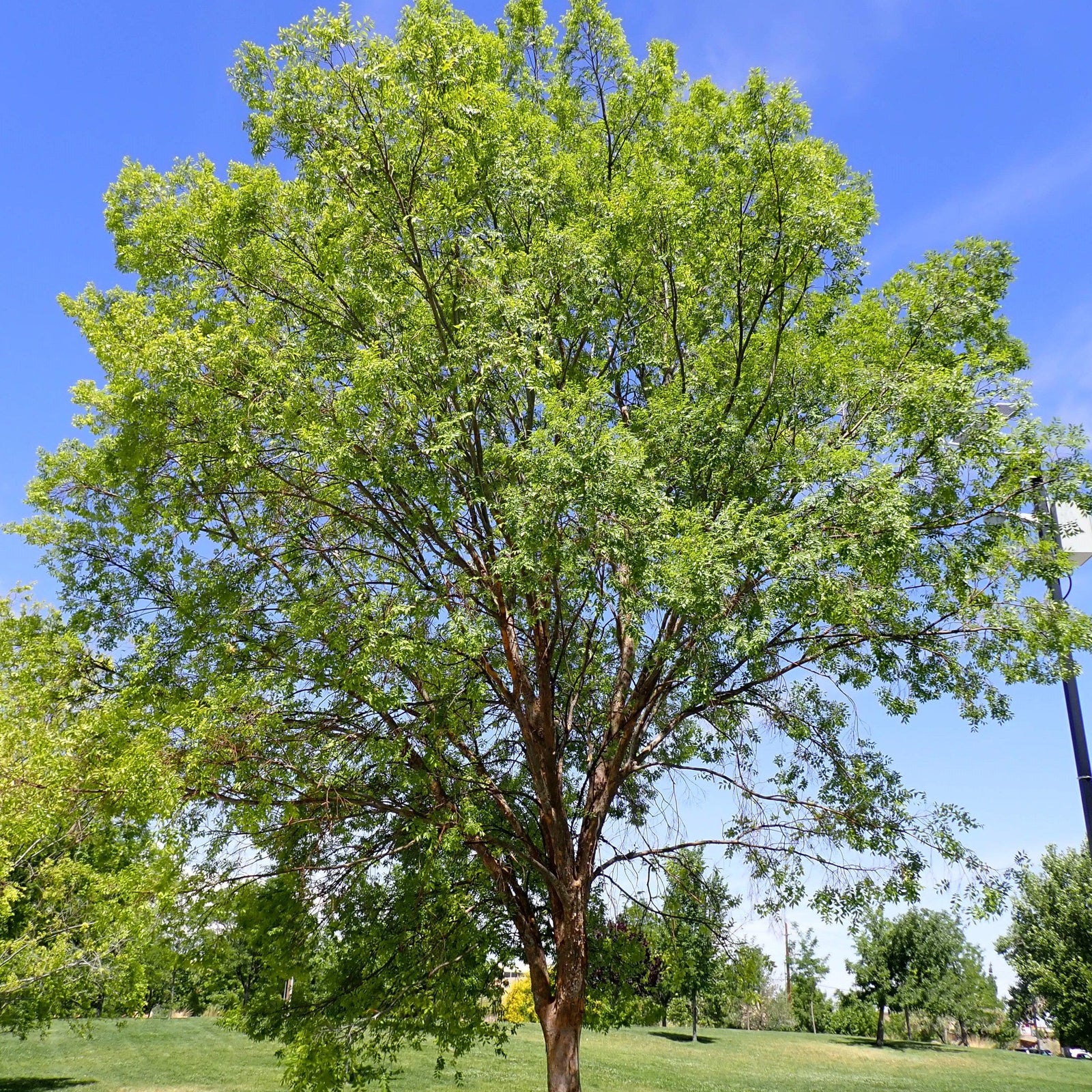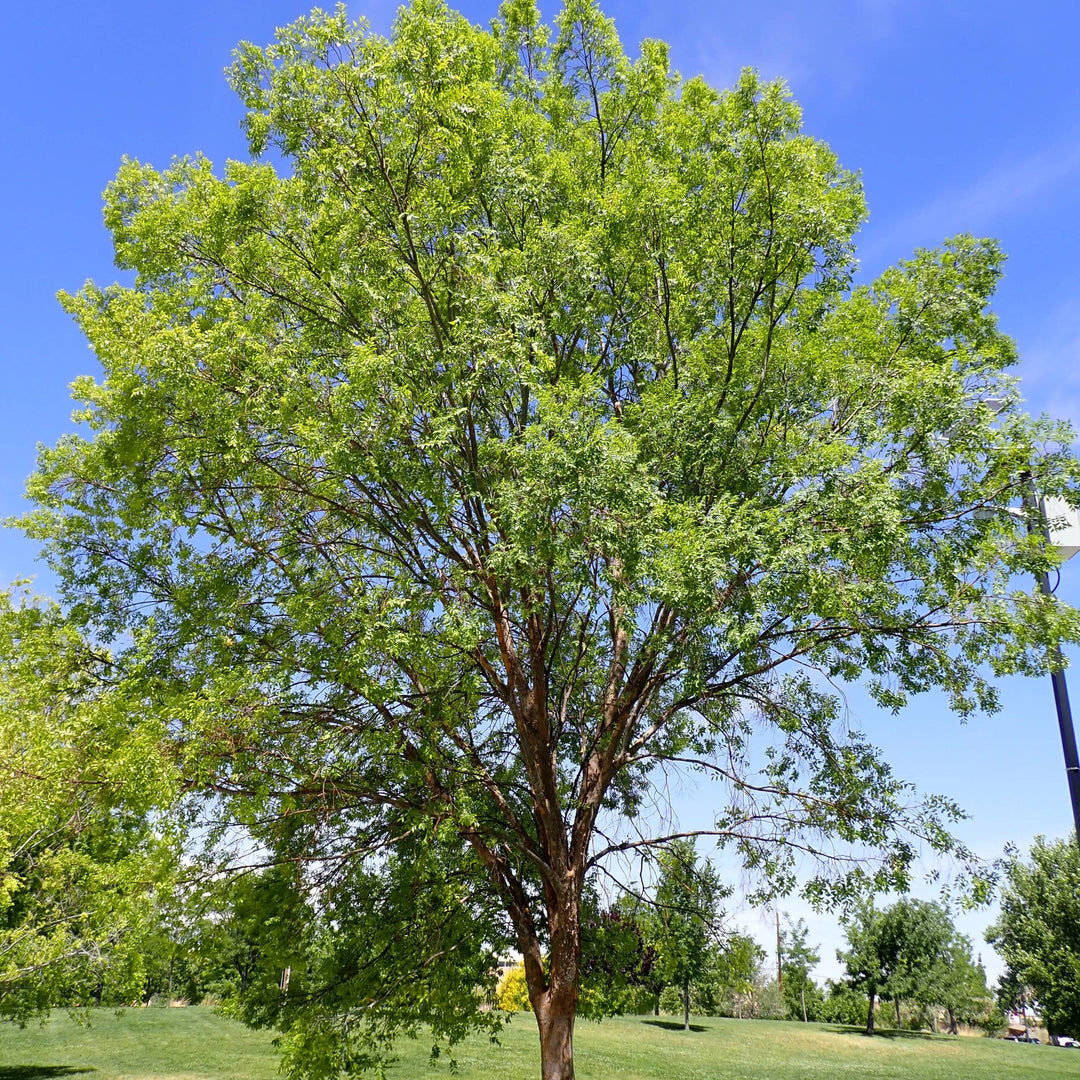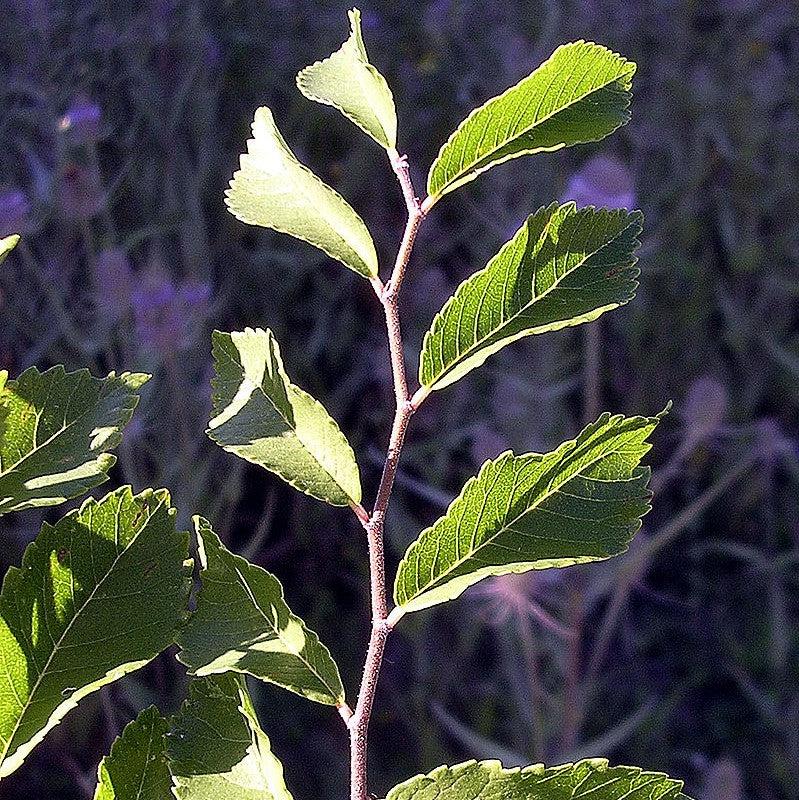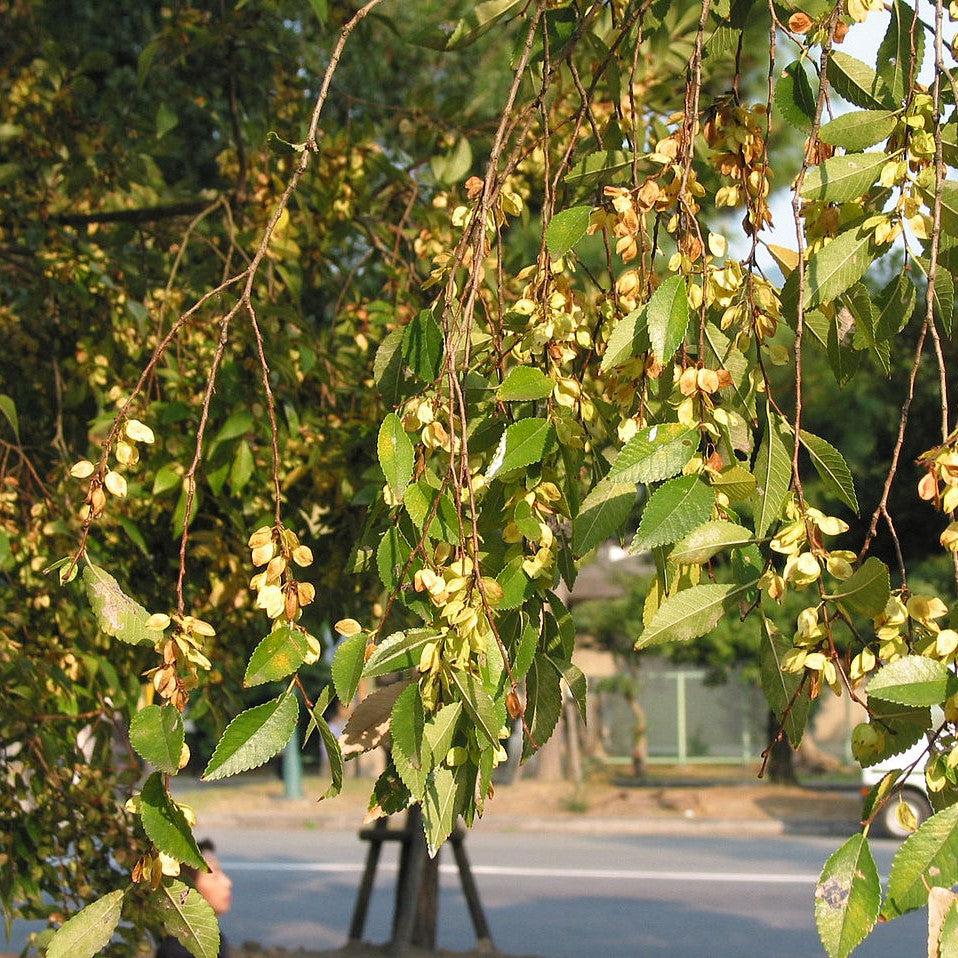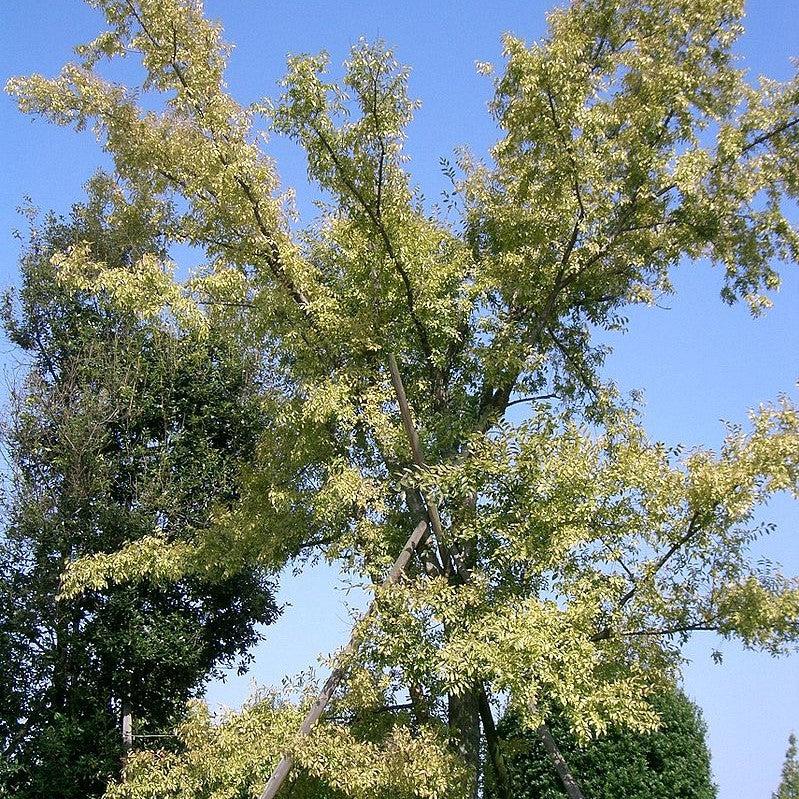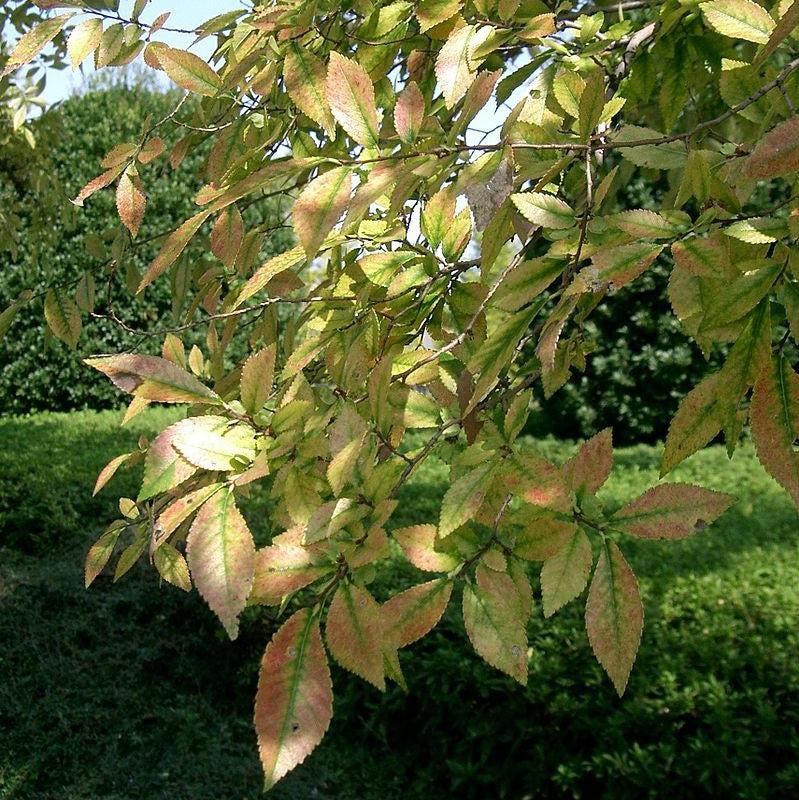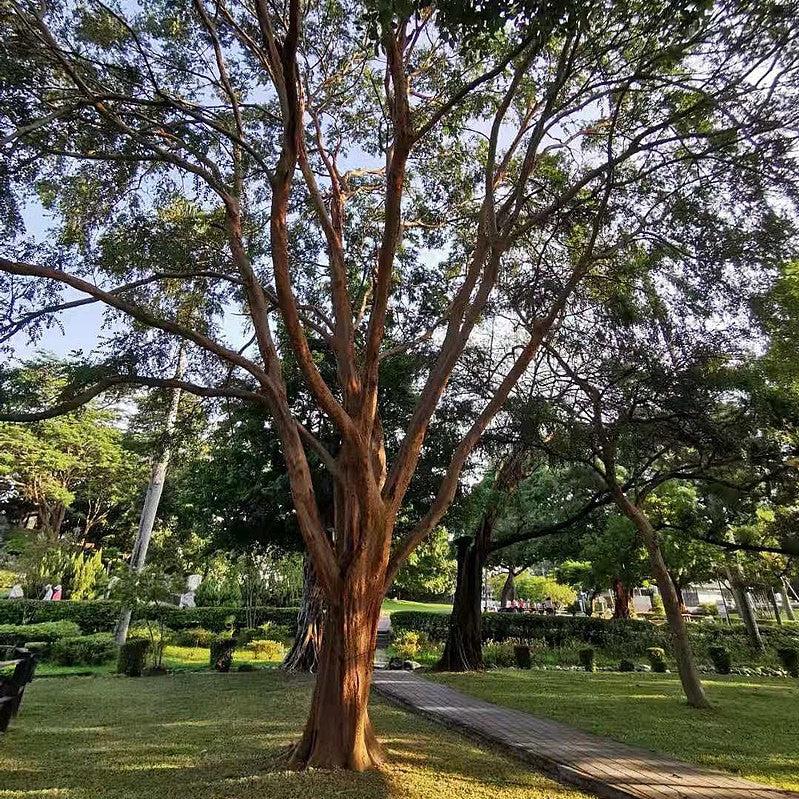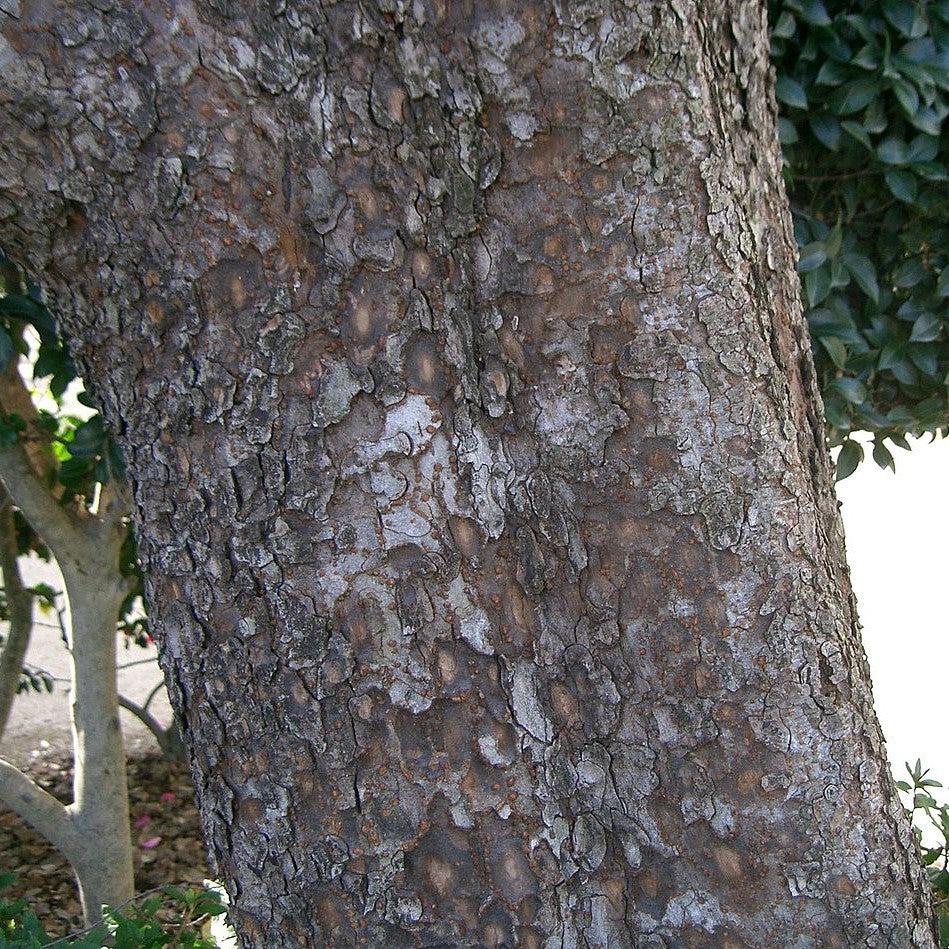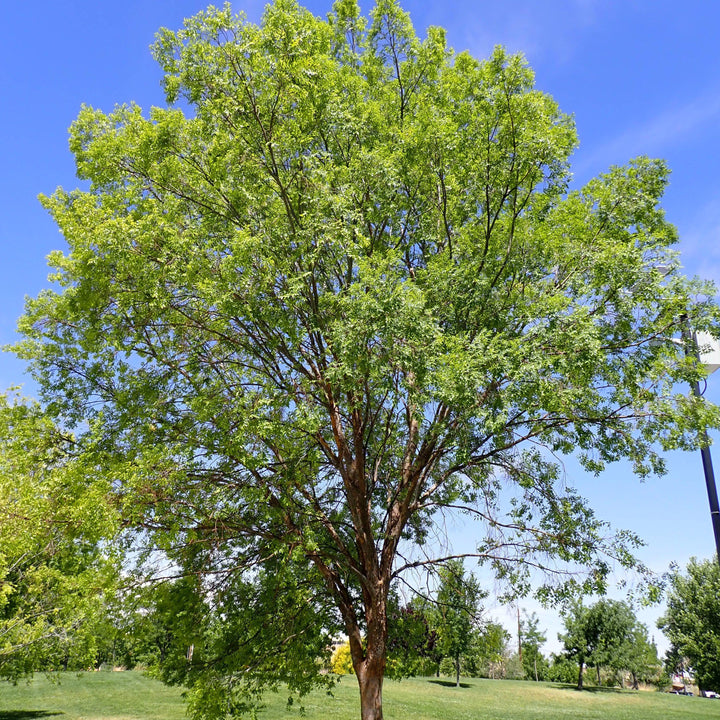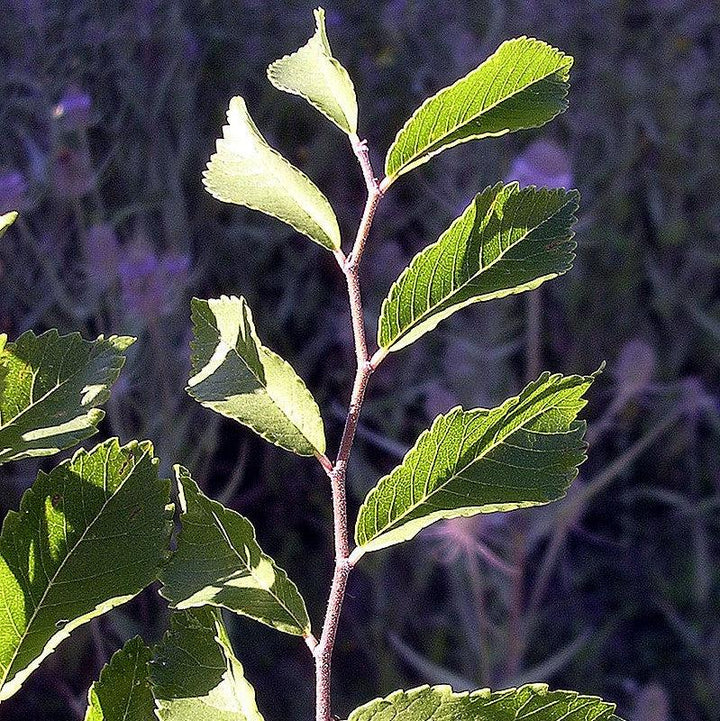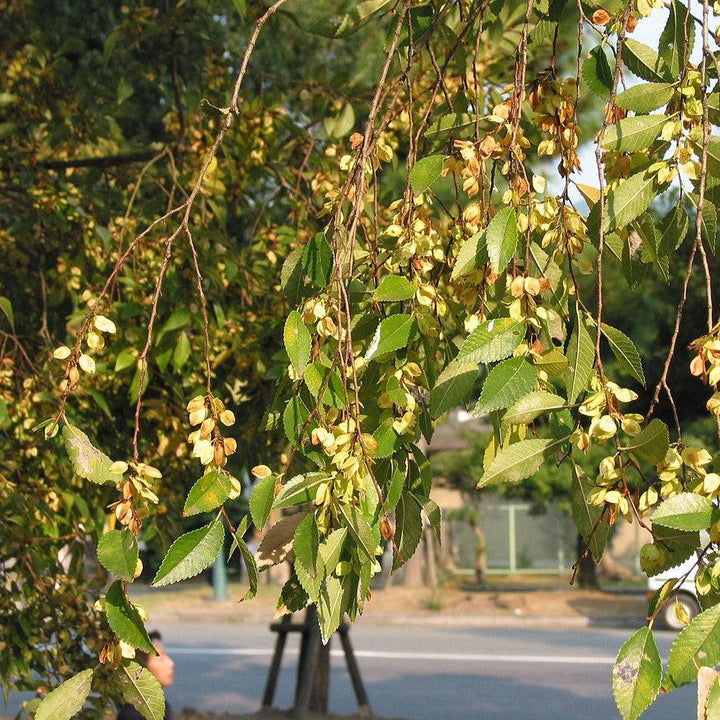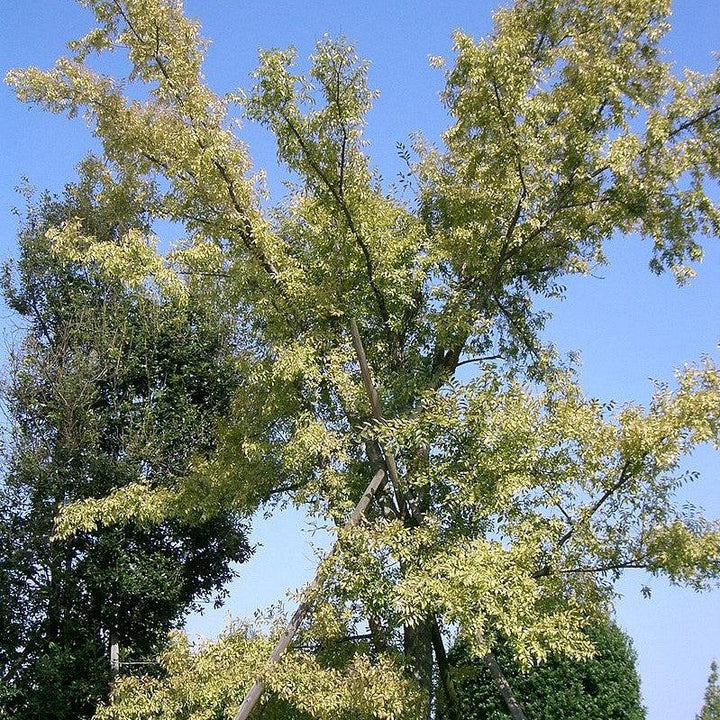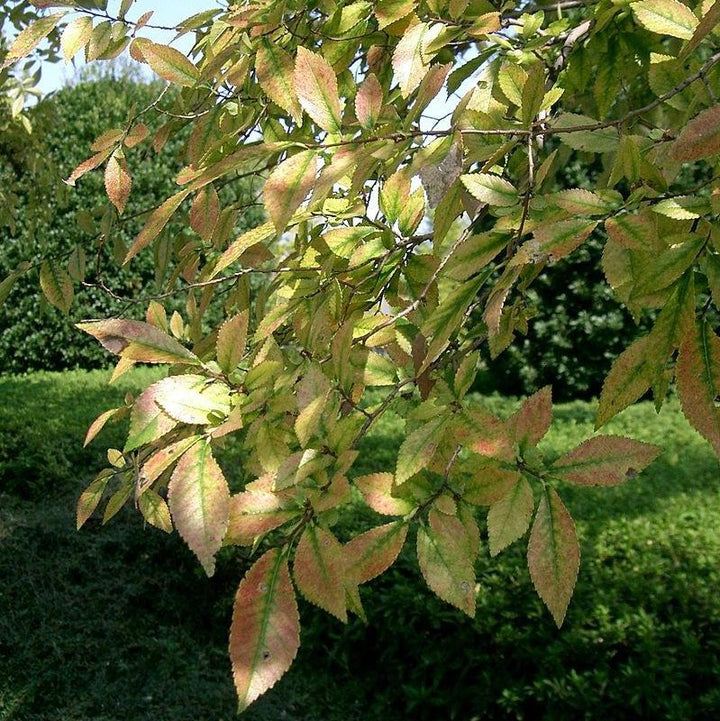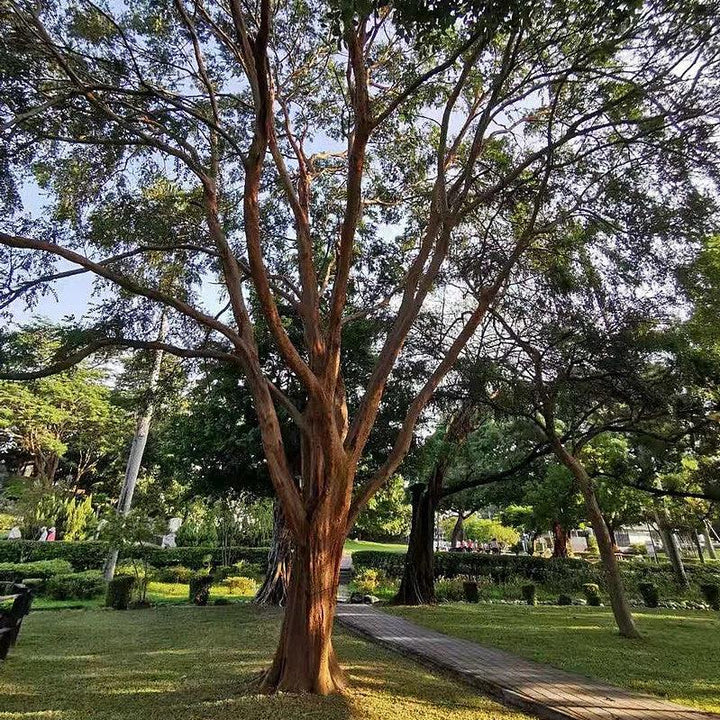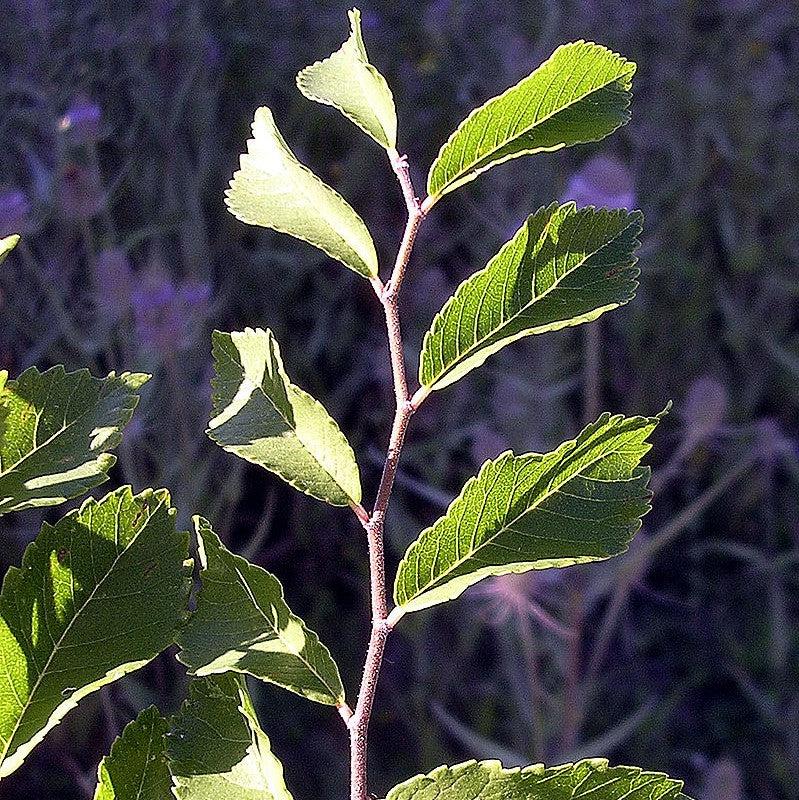Lacebark Elm is a mid-sized deciduous tree with a rounded crown, long pendulous branches, and molted multi-colored exfoliating bark. The narrow shiny dark green leaves have small teeth that can turn an undistinguished yellow in fall, or occasionally more interesting shades of yellow or reddish-purple. Insignificant small reddish-green flowers bloom in fall and give way to papery wing-like seed pods that mature mid-fall. Grows best with full sun and rich well-drained soils. Can tolerate both dry and wet sites.
|
Type: |
|
|
Origins: |
China |
|
Height: |
50’ - 60’ |
|
Spread: |
25’ - 45’ |
|
Spacing: |
35’ |
|
USDA Hardiness Zone: |
4 - 9 |
|
Culture: |
|
|
Bloom Color: |
Green |
|
Season of Interest: |
MAINTENANCE NEEDS: Low Maintenance. Elms are susceptible to phloem necrosis and wetwood. Other potential issues include wilts, rots, canker, leaf spots as well as pests such as miners, borers, and scale.
LANDSCAPE USES: Accents or Group Plantings, Borders, Woodland Gardens, Rock Gardens, Ponds and Streams, and Shade Tree.
COMPANION PLANTS: Crape Myrtle, Fountain Grass, Maple
IMAGES: Matt Lavin, Ulmus parvifolia, (2) Hamachidori, Ulmus parvifolia seeds01, CC BY-SA 3.0, (3) KENPEI, Ulmus parvifolia3, CC BY-SA 3.0, (4) KENPEI, Ulmus parvifolia1, CC BY-SA 3.0, (5) Ping an Chang, 榔榆 Ulmus parvifolia 20210908101019 14, CC BY-SA 4.0, (6) KENPEI, Ulmus parvifolia4, CC BY-SA 3.0
*As plants have ranges in appearance they may not appear as the images shown.


